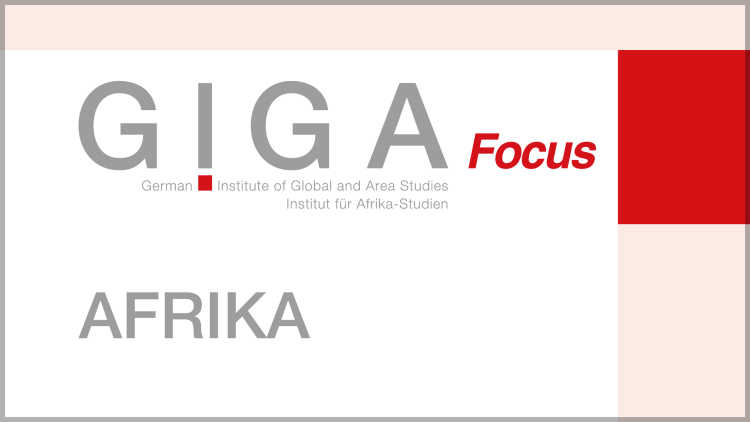- Home
- Publications
- GIGA Focus
- The Contradictory Logics of International Intervention
GIGA Focus Global
The Contradictory Logics of International Intervention
Number 4 | 2018 | ISSN: 1862-3581

In the rapidly unfolding multipolar world order, an unprecedented number of states, international organisations, advocacy groups, and other actors are devising and implementing a growing number of interventions to strengthen democracy, peace, and security. The political and normative views on these external interventions differ fundamentally.
Negative connotations predominate with respect to the term “intervention” in the international promotion of democracy, peace, and security. This is mostly due to its popular association with military operations, the increasingly blurred divide between “the external” and “the internal,” contested legitimacy, and the prevailing focus on Western actors. However, a narrow understanding focused on military operations leaves aside an increasing variety of less coercive forms of intervention.
Differentiating between the various forms, goals, and contexts of intervention is a precondition for proper analysis and application. The most important factors are the actors involved, the mode of operation (coercive vs. less coercive), and the specific targets to be achieved – for instance, the underlying concept of “peace.”
Current trends in the international arena include the ever-increasing number of actors, the erosion of dominant norms, the crisis of multilateralism, and the decrease in democracy-promotion activities in favour of addressing security concerns.
Due to the complex nature of international interventions, assessing their effects can be frustrating. It is most important to adequately tackle the individual interventions’ contexts and to group similar kinds of intervention. For instance, UN peacekeeping, in conjunction with other factors, has often contributed to the ending of severe violent conflicts.
Policy Implications
Western states are no longer the dominant powers when it comes to democracy promotion, peacekeeping, and peacebuilding. Against this background, pursuing pragmatic approaches to safeguard minimum conditions of democratic governance and security seems to be the most feasible option. To properly assess individual interventions’ effects, practitioners (and scholars) should make more consistent efforts to establish yardsticks and evaluation designs before devising specific interventions.
The Intervention Dilemma
After the democracy-promotion euphoria of the post-Cold War period, attention to this intervention area has been in decline for almost two decades. The major focus of current interventions appears to rest on peace-, security-, and state-building activities, rather than on outright democracy promotion. This tendency is reflected in the United Nations’ Sustainable Development Goal 16, which brings together peace, security, and governance. However, despite the growing attention these fields are receiving from scholars and policymakers alike, knowledge about these interventions’ effects remains scattered across various research strands.
In particular, critics argue that prominent military interventions lack legitimacy and have detrimental effects, as in the case of Afghanistan, Libya, and Iraq. The same holds for the purportedly liberal peacebuilding agenda (Paris 2010). More generally, international interventions – understood in a broader, not just military sense – to increase democracy and security face a fundamental dilemma. On the one hand, opponents dismiss them as “hegemonic,” “intrusive,” or counterproductive. The various intrusions into the Syrian war by the US, Russia, Iran, and Turkey, among others, have indeed been driven far more by these parties’ own interests than by considerations regarding the devastating humanitarian costs of the conflict on the people in the country.
On the other hand, policymakers now devise interventions more often than ever, whether through outright military support in Syria, the provision of military “advisors” in Uganda, or the strengthening of electoral commissions in emerging democracies. The UN currently runs 14 peace operations with more than 110,000 military, police, and civilian staff in the field. In addition, there are notable regional interventions such as the African Union Mission in Somalia (AMISOM), which comprises 22,000 soldiers and civilians (and is heavily supported by external funders such as the European Union), or the European Union Rule of Law Mission in Kosovo (EULEX Kosovo). However, the UN Security Council, the organ that has the sole legitimate power for authorising military intervention, is largely blocked and incapable of providing solutions to devastating international security crises such as the war in Syria. Only in smaller conflicts where genuine great power interests are either absent or converging is multilateralism still working. Examples include the United Nations Multidimensional Integrated Stabilization Mission in Mali (MINUSMA) or the UN sanctions imposed on members of the Al-Qaeda and Taliban terror groups (based on UNSC Resolution 1267).
In order to move the discussion about international intervention forward, it is important to distinguish between the various kinds of interventions and to go beyond a solely military understanding of intervention. This paper reflects on the contradictory logics, as well as the promises and limits, of international intervention. Against the backdrop of the crisis of multilateralism and the inherent limitations of interventions, it will be argued that a pragmatic approach to safeguarding the minimum conditions for democratic governance and security, rather than liberal idealism, represents the most feasible option for devising appropriate international interventions to strengthen democracy, peace, and security from the outside.
Understanding Intervention
Intervention is a controversial concept that carries different connotations for diverse actors in a variety of fields. Yet, some constitutive elements of the action of intervention can be discerned. First, it presupposes a divide between the “outside” and “inside” of any state or society. Due to globalisation and the increasing interconnectedness of societies, this boundary is becoming increasingly blurred, but it is still relevant for practical and analytical purposes. Second, intervention is a purposeful action intended to modify the present state of affairs outside one’s own borders (in contrast to general processes such as globalisation, or diffusion) – even though the exact aim of intervention is often unclear. Third, obviously there are intervention targets, but these are not passive recipients; rather, they have their own “actorness” that moulds or even shapes external intervention (e.g. Jourde 2007). Also, the controversial regime-change agenda during the George W. Bush presidency (2001–2009) should not divert attention from the fact that most democracy-promotion programmes are implemented with the knowledge and consent of the government in the target state. These activities focus, broadly speaking, on three areas: “1) support for institutions and processes crucial to democratic contestation – above all, free and fair elections […]; 2) the strengthening and reform of key state institutions […] such as parliaments, judiciaries, and local governments; and 3) support for civil society, usually […] public-interest NGOs, independent media outlets, labor unions, and civic-education initiatives” (Carothers 2015: 59).
Observers of international politics most often couple intervention with the adjective “military” and instantly associate it with the use of coercion by a powerful actor against a weaker counterpart. This is reflected in handbook definitions of the term, according to which intervention “is most commonly understood to mean the use of military force by one country to interfere in the internal affairs of another country” but may also “include political interference, economic sanctions, covert operations, and even cultural domination” (Robinson 2001: 429). In this sense, external intervention violates the target state’s sovereignty. Due to the popularity this view enjoys, it is important to underline that intervention involves power asymmetries but that not all interventions entail the use of coercion.
Most fundamentally, intervention – whether it is successful or not – is an intentional process to change the affairs of another state or society. While intervention presupposes intention, it differs from indirect influences such as diffusion, which occurs without “any collaboration, imposition, or otherwise programmed effort on the part of any of the actors” (Elkins 2005: 6). In a nutshell, external intervention can be understood as purposeful actions outside a state’s own boundaries directed towards another state or society, or its related components, with the goal of modifying the situation in or activities of the target.
Not all Interventions Are Equal
International interventions differ substantially from each other. In order to better grasp what they entail in the areas of democracy, peacekeeping, and peacebuilding, it is useful to differentiate between interventions along two axes: the actors involved and the mode of operation (see also Table 1).
Actors Involved: State vs. Non-State
First, state and non-state actors can devise interventions. In recent years the international arena has become much more varied and the number of states and actors engaging internationally has risen dramatically (Carothers and Samet-Marram 2015; on rising powers and peacebuilding, Call and Coning 2017). Another important distinction to be considered with regard to the intervenors is whether the intervention is a unilateral or a multilateral operation and whether it operates under a United Nations Security Council mandate or not. What the mandate allows is a further contested issue. This was, for instance, much discussed in relation to UNSC Resolution 1973, which gave the parties involved the mandate to establish a no-fly zone over Libya in March 2011.
Mode of Operation: Coercive vs. Less Coercive
The most common feature used to differentiate the kinds of interventions is the degree of coercion. Classifying intervention measures along this axis is by no means unambiguous. Difficulties arise from the delicate question of how to determine when encouragement or pressure becomes coercion (Hedeen 2005). While we can easily classify cases involving direct physical violence as coercive, those in which mediation, negotiation, and arbitration techniques are applied and combined with other measures are harder to characterise adequately. Coercion refers to the exertion or threatening of violence in order to alter the target’s behaviour. It thus “entails the risk of death for citizens of the targeted country as well as the intervening country, and the violation of national sovereignty” (Escribà-Folch and Wright 2015: 219).
UN peacekeeping and peacebuilding operations, however, require the consent of the target state. Also, most interventions for humanitarian purposes have received some consent from the target state, with Kosovo and Libya being the main exceptions (Welsh 2011). In Welsh’s view, therefore, most multilateral interventions in peace and security “have carried with them standard features of legitimacy: a multilateral stamp of approval and/or degree of consent from the target state” (Welsh 2016: 2).
The table categorises the different interventions of states and international organisations according to the degree of coerciveness.

The two axes – the main mode used and the main actors involved – may be the most pertinent ones, but others are also relevant, depending on the respective practical and research interests. For instance, communication technology is leading, at least in some areas, to a decoupling of intervention and direct spatial encounters between the intervenors and the intervention targets. Prominent examples include lethal drone strikes, bots in social media to affect public opinion and support political campaigns, and the Stuxnet computer virus attack that reportedly damaged Iran’s nuclear programme in 2010. Thus, we can also differentiate “physical” interventions from digital ones.
Blurring Divides and Simultaneous Application
The above-mentioned categories are useful for analytical purposes. Yet in practice, the fields of action and intervention areas overlap. The lines dividing different kinds of intervention are becoming increasingly blurred. This renders their interpretation problematic, as it is becoming harder to identify the level of coerciveness – and thus, the morality, legality, proportionality, and legitimacy – involved in each. An example of this is so-called hybrid warfare. It is characterised by a mixture of clearly coercive (e.g. military) and less coercive actions (e.g. the mobilisation of local parties, the manipulation of information, or hacking), including both physical and digital activities, as carried out, for instance, by Russia. These complexities increase the challenges involved in evaluating the effects of external interventions in peace and security as well as democracy promotion or democracy prevention (von Soest 2015).
A Pragmatic Approach towards Intervention
The causes of international intervention are manifold and range from “failing and collapsed” statehood (Zartman 1995) to the ending of civil wars, the combating of terrorism, and regime change, to name just a few extreme examples. Of course, the decisions to intervene are strategic and driven by a bundle of considerations and interests (on sanctions, see von Soest and Wahman 2015). Due to the complex nature of external interventions, assessing their effects is difficult and can be frustrating. As can be seen in the debate about liberal peacebuilding and the so-called local turn, the perspectives, assessments, and prescribed forms of intervention vary widely.
Varying Perspectives on External Intervention
It is often stated that while governments and civil society actors in the North stress liberal ideas of human security and interventionism, governments in the so-called Global South tend to promote traditional notions of security and state sovereignty. Current developments – for instance, the rise of populism in the West as well as the democratic commitment of some rising powers and the common security interests of states – are increasingly calling this purported differentiation into question. In the “new global marketplace of political change” (Carothers and Samet-Marram 2015), Northern states are no longer the dominant powers when it comes to peacekeeping, peacebuilding, and democracy promotion – for instance, by monitoring elections, strengthening parliaments, supporting civil society organisations, and strengthening independent media. It is therefore of key importance to comprehensively assess and differentiate between perspectives in the Global South – which are often also bound to specific issue areas – and not to gloss over substantial differences within this category as is regularly done (Narlikar 2016).
Understandings of Peace
Among the possible effective “tools,” a continued UN peacekeeping and troop presence can contribute to a longer absence of violent conflict in (post-)conflict societies (Hultman, Kathman, and Shannon 2016). Foreign military or police forces can deter rebellion and encourage targeted states to reduce their military budgets, thereby diminishing the likelihood of violent outbreaks. In general, interventions such as UN peacekeeping operations have been successful in ending direct hostilities and violence – that is, in securing “negative peace.” On the other hand, coercive interventions have regularly failed to provide more demanding notions of “sustainable,” “positive,” or “qualitative” peace (Ansorg and Kurtenbach 2017) – that is, to facilitate people living together in a trusting and cooperative way in a society.
Targets of Intervention
Intervention is asymmetrical. It is dominated by the intervenor. Yet existing analyses demonstrate that the effects of external intervention vary considerably. As weaker parties are not passive recipients but have varying degrees of “receptivity” and may mould external influences to their own advantage (Jourde 2007), the systematic analysis of the political dynamics within targeted states and societies would shed more light on the effects of intervention vis-à-vis those of other domestic and structural factors.
Crises of Legitimacy and the Crisis of Multilateralism
Despite the fact that at least multilateral interventions in the area of peace and democracy are regularly carried out with the knowledge and consent of the target state, the term “intervention” immediately evokes resentment. On the one hand, this is due to consequentialist reasoning, that intervention in this area rarely attains the desired outcomes. Yet, more fundamentally, this critique emphasises inherently normative arguments stressing that external, powerful actors should not interfere in other, less powerful actors’ affairs, particularly when they do not have a proper mandate to do so. As Paris has observed (2014), due to the inherent contradiction between altruistic and self-interested motives, legitimacy problems are particularly present in humanitarian interventions. In addition, views on “adequate” intervention currently seem to diverge more than ever and the United Nations, as the key mechanism of multilateralism, is largely unable to respond to devastating conflicts such as the war in Syria.
A Pragmatic Approach
There is no global consensus on democracy promotion, peacekeeping, and longer-term peacebuilding from the outside. Against this background, pursuing pragmatic approaches to safeguard minimum conditions of democratic governance and security, rather than liberal idealism, appears to be the most feasible option (Moe and Stepputat 2018). Most fundamentally, one needs to acknowledge that what external actors can achieve is limited. Intervenors might – as is the case for most UN peacekeeping missions – stop immediate hostilities, but they cannot guide states and societies over a longer period. With respect to long-term developments, external intervention is only a secondary factor. It can, however, provide a permissive environment for societal and political transformation. In the long term, for external, democratic actors from the North and the South this pragmatic approach would mean making sure that fundamental human rights are protected. In the case of grave violations, the imposition of external pressure as a last resort would be legitimate, preferably through multilateral means. Devising specific institutional templates for how a polity is organised would not be part of the package. Concepts such as good-enough governance (Grindle 2004) focus on these minimum standards. In the realm of peacebuilding this would mean, for instance, focusing on “infrastructures to peace” – that is, on supporting institutions for the peaceful resolution of local conflicts and the constructive interaction of social groups (UNDP 2018; Wolff 2016).
In order to attain and support these minimum conditions, there is a need for consistency across different policy fields. This might often be more important than outright, large-scale intervention (Wolff 2016). For instance, Western governments must not forego human rights and minimum democratic criteria when they sign migration pacts with authoritarian governments which themselves suppress political and/or social minorities.
Footnotes
References
Ansorg, Nadine, and Sabine Kurtenbach (eds, 2017), Institutional Reforms and Peacebuilding: Change, Path-Dependency and Societal Divisions in Post-War Communities, London/New York, NY: Routledge.
Call, Charles T., and Cedric de Coning (eds, 2017), Rising Powers and Peacebuilding: Breaking the Mold?, New York, NY: Palgrave Macmillan.
Carothers, Thomas, (2015), Democracy Aid at 25: Time to Choose, in: Journal of Democracy, 26, 1, 59–73.
Carothers, Thomas, and Oren Samet-Marram (2015), The New Global Marketplace of Political Change, Carnegie Endowment for International Peace, http://carnegieendowment.org/2015/04/20/new-global-marketplace-of-political-change-pub-59808 (10 October 2018).
Elkins, Zachary (2005), On Waves, Clusters, and Diffusion: A Conceptual Framework, in: The ANNALS of the American Academy of Political and Social Science, 598, 1, 33–51.
Escribà-Folch, Abel, and Joseph Wright (2015), Foreign Pressure and the Politics of Autocratic Survival, New York, NY: Oxford University Press.
Grindle, Merilee S. (2004), Good Enough Governance: Poverty Reduction and Reform in Developing Countries, in: Governance, 17, 4, 525–548.
Hedeen, Timothy (2005), Coercion and Self-Determination in Court-Connected Mediation: All Mediations Are Voluntary, But Some Are More Voluntary than Others, in: Justice System Journal, 26, 3, 273–291.
Hultman, Lisa, Jacob D. Kathman, and Megan Shannon (2016), United Nations Peacekeeping Dynamics and the Duration of Post-Civil Conflict Peace, in: Conflict Management and Peace Science, 33, 3, 231–249.
Jourde, Cédric (2007), The International Relations of Small Neoauthoritarian States: Islamism, Warlordism, and the Framing of Stability, in: International Studies Quarterly, 51, 2, 481–503.
Moe, Louise Wiuff, and Finn Stepputat (2018), Introduction: Peacebuilding in an Era of Pragmatism, in: International Affairs, 94, 2, 293–299.
Narlikar, Amrita (2016), “Because They Matter:” Recognise Diversity—Globalise Research, GIGA Focus Global, 1, April, www.giga-hamburg.de/en/publication/because-they-matter.
Paris, Roland (2010), Saving Liberal Peacebuilding, in: Review of International Studies, 36, 2, 337–365.
Paris, Roland (2014), The “Responsibility to Protect” and the Structural Problems of Preventive Humanitarian Intervention, in: International Peacekeeping, 21, 5, 569–603.
Robinson, William I. (2001), The Oxford Companion to Politics of the World, Edited by Joel Krieger, Oxford/New York, NY: Oxford University Press.
UNDP (2018), Infrastructures for Peace, United Nations Development Programme (UNDP).
von Soest, Christian (2015), Democracy Prevention: The International Collaboration of Authoritarian Regimes, in: European Journal of Political Research, 54, 4, 623–638.
von Soest, Christian, and Michael Wahman, (2015), Not All Dictators Are Equal: Coups, Fraudulent Elections, and the Selective Targeting of Democratic Sanctions, in: Journal of Peace Research, 52, 1, 17–31.
Welsh, Jennifer M. (2011), A Normative Case for Pluralism: Reassessing Vincent’s Views on Humanitarian Intervention, in: International Affairs, 87, 5, 1193–1204.
Welsh, Jennifer (2016), Speaking Notes for Panel on “Interventions to Foster Peace and Security,” Manuscript for GIGA Global Transitions Conference, “External Intervention in the Age of Global Transitions, 1-2 December 2016, Hamburg: German Institute for Global and Area Studies (GIGA).
Wolff, Jonas (2016), Peacebuilding and Democracy Promotion: What Current Challenges to the Latter Might Tell Us for Rethinking the Former, in: Tobias Debiel, Thomas Held and
Ulrich Schneckener (eds, 2016), Peacebuilding in Crisis: Rethinking Paradigms and Practices of Transnational Cooperation, 73–90, London/New York: Routledge.
Zartman, I. William (1995), Collapsed States: The Disintegration and Restoration of Legitimate Authority, Boulder, CO: Lynne Rienner Publishers.
General Editor GIGA Focus
Editor GIGA Focus Global
Regional Institutes
Research Programmes
How to cite this article
von Soest, Christian (2018), The Contradictory Logics of International Intervention, GIGA Focus Global, 4, Hamburg: German Institute for Global and Area Studies (GIGA), http://nbn-resolving.de/urn:nbn:de:0168-ssoar-59593-3
Imprint
The GIGA Focus is an Open Access publication and can be read on the Internet and downloaded free of charge at www.giga-hamburg.de/en/publications/giga-focus. According to the conditions of the Creative-Commons license Attribution-No Derivative Works 3.0, this publication may be freely duplicated, circulated, and made accessible to the public. The particular conditions include the correct indication of the initial publication as GIGA Focus and no changes in or abbreviation of texts.
The German Institute for Global and Area Studies (GIGA) – Leibniz-Institut für Globale und Regionale Studien in Hamburg publishes the Focus series on Africa, Asia, Latin America, the Middle East and global issues. The GIGA Focus is edited and published by the GIGA. The views and opinions expressed are solely those of the authors and do not necessarily reflect those of the institute. Authors alone are responsible for the content of their articles. GIGA and the authors cannot be held liable for any errors and omissions, or for any consequences arising from the use of the information provided.

















